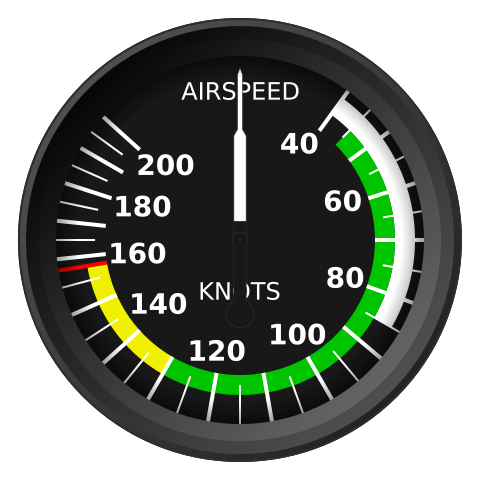Understanding the Airspeed Indicator Diagram: A Comprehensive Guide
Oct 17, 2024
What is the Airspeed Indicator?
The airspeed indicator is key to a safe flight by allowing you to know exactly how fast you are going relative to the air, known as air speed.
This is important during all phases of flight, takeoff, landing and critical maneuvers. By giving you real time speed data it gives you the confidence to make informed decisions and overall safer and more efficient flying.
Part of the pitot-static system, the airspeed indicator uses the pressure difference between the static and dynamic air. This complex system is designed to give you accurate readings so you can fly at the right speeds to avoid stall or structural damage.
Historical Development of the Airspeed Indicator
The airspeed indicator has a long history dating back to the early days of flying. In the early 20th century, the first airspeed indicators appeared, based on the principle of dynamic pressure. These early devices were mechanical, using a series of gears and levers to translate air pressure into a speed reading on a dial.
As aviation technology improved so did the airspeed indicator. New materials and better engineering led to more reliable and accurate instruments. Over the years the airspeed indicator evolved from its mechanical beginnings to include electronic components and get more precise and robust.
Nowadays airspeed indicators are mostly digital, using sensors and complex algorithms to give pilots real time airspeed. This is just a reflection of the overall aviation technology advancements, so pilots have the best tools to fly safe and efficient.

Components of the Airspeed Indicator
Pitot Tube and Line
The pitot tube is the heart of the airspeed indicator system and is cleverly designed to capture the dynamic air pressure created by the aircraft moving through the air.
Placed in line with the direction of travel the L shaped design allows it to point directly into the airstream, so the pressure readings are accurate.
This is key to its function as even a small deviation can affect the data collected, which shows the engineering that goes into its installation.
The pitot line is the conduit that carries the ram air from the pitot tube to the pressure diaphragm of the airspeed indicator.
The airspeed indicator operates based on the pressure differential between the dynamic air from the pitot tube and the static air collected through the static port, emphasizing the importance of static air for accurate airspeed readings.
This simple connection is the key to translating the dynamic pressure into data.
As the air travels through this line it makes flight data collection real and understandable, it shows the cleverness of aviation instruments that keep us all safe in the air.
Static Port and Static Pressure Line
Static ports are where you get your airspeed readings from by capturing air at ambient pressure. They’re on the aircraft’s surface where the airflow is undisturbed so they can get the atmospheric pressure data.
This undisturbed air is important to eliminate errors that can come from turbulence and other aerodynamic effects on the aircraft’s movement. By reflecting the air pressure, static ports help the airspeed indicator work smoothly and correctly, a very important instrument for pilots.
The airspeed indicator works by measuring the difference between static and dynamic pressure, static pressure is from the static port and total pressure from the pitot tube.
The static line is the pipe through which the ambient pressure captured by the static ports gets to the airspeed indicator. Its smooth design ensures the data gets through with minimal loss or distortion.
As the pressure gets through the line, it interacts with the airspeed indicator’s internal mechanisms to give the pilot flight information.
This highlights the importance of keeping the static port and line intact, as any damage could affect the readings and ultimately flight safety.
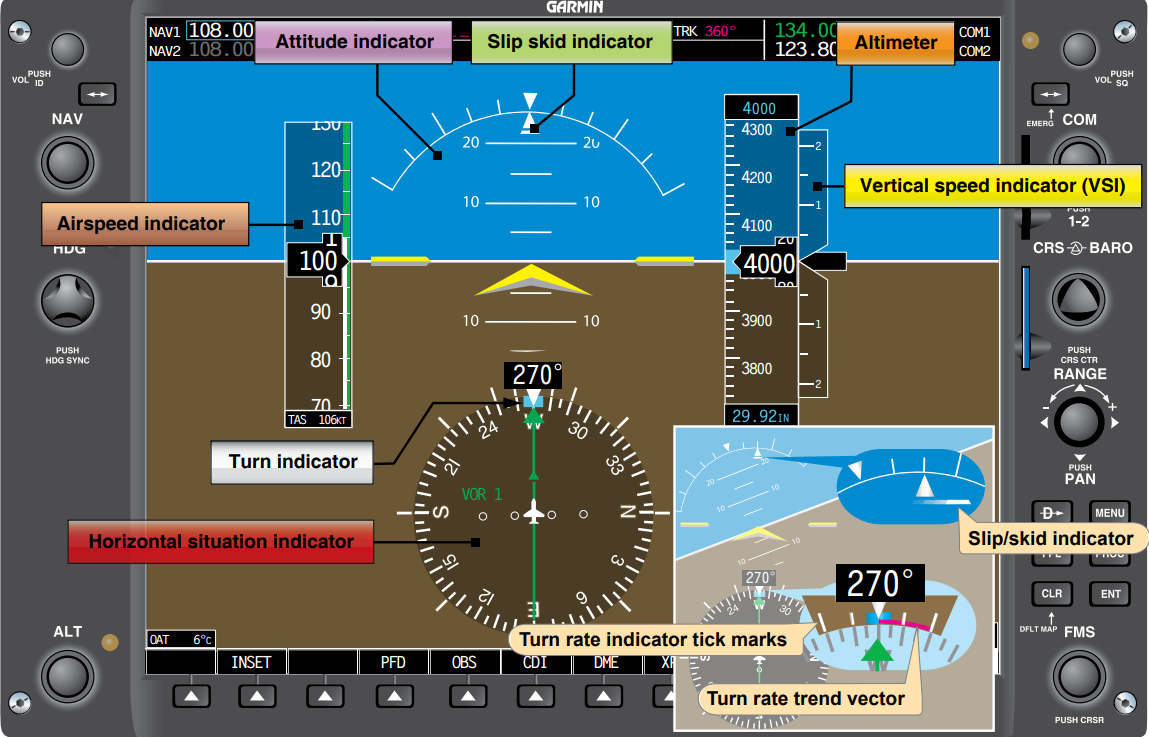
Instrument Face and Case
The face of the instrument is where pilots get real time feedback on the aircrafts speed so they can make quick decisions.
The clarity of the face is key as any difficulty in reading the information can cause major misunderstandings during flight.
The needle dances across the face converting complex pressure readings into a simple speed display in knots with a series of levers and gears.
This mechanism allows pilots to adjust and maintain safe flying speeds with accurate and immediate data.
The case of the airspeed indicator is critical in protecting the internal components that read the pressure from the static port. It houses the pressure diaphragm and protects from the vibrations and environmental conditions of flight.
The connection to the static port via the static line is designed to transmit atmospheric pressure accurately, hence the importance of the case being structurally sound.
By protecting the internal elements, the case guarantees the instrument’s durability and the reliability of the crucial data it provides to pilots.
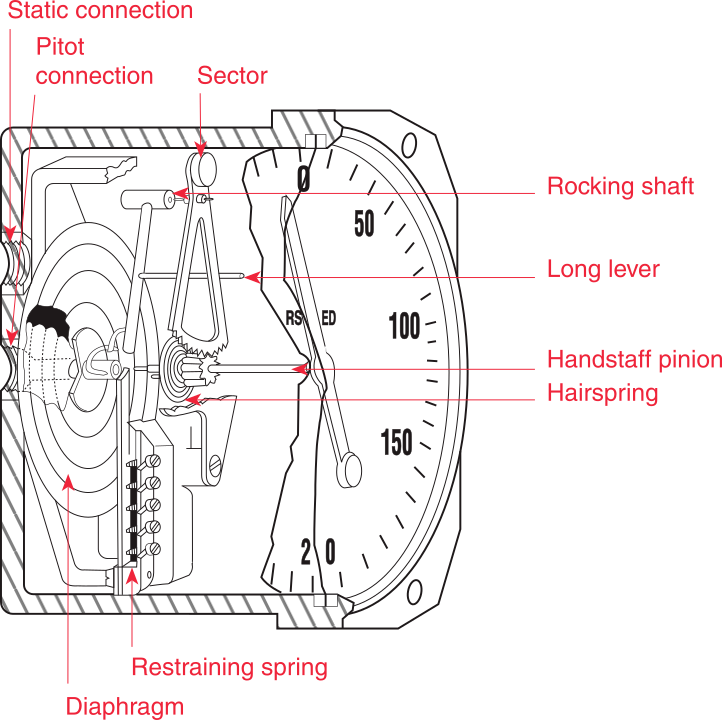
How the Airspeed Indicator Works
Basic Principle
The airspeed indicator works by converting air pressure differences into information for the pilot. The static port’s job, collecting ambient air pressure, is key because it’s the baseline for the surrounding environment.
The pitot tube faces into the airflow and captures total pressure. This way even small changes in airspeed or altitude can be detected and measured and give the pilot feedback on their speed and flight conditions.
Dynamic pressure is the difference between total and static pressure. This is important because it’s directly related to the aircraft’s speed and shows how Bernoulli’s principle works. Understanding the minimum steady flight speed is crucial for pilots as it indicates the minimum airspeed at which an airplane is controllable, especially during configurations such as landing and takeoff.
By using this fundamental principle of fluid dynamics, the airspeed indicator turns complex atmospheric data into simple and useful information.
Technological Advancements in Airspeed Indicators
In recent years the airspeed indicator has come a long way from being mechanical to digital. Digital airspeed indicators are a big step forward using advanced sensors and algorithms to give you precise and reliable airspeed data.
They are more accurate and less prone to error than the old mechanical ones. One of the most exciting developments is the air data computer. These are fancy devices that combine multiple sensors and complex algorithms to give you all the flight data, airspeed, altitude and heading.
By processing data from multiple sources, the air data computer makes the airspeed reading more accurate and reliable and therefore safer and more efficient flying.
Airspeed Indicator Markings and Colors
Understanding the airspeed indicator markings and colors is critical for safe aviation practices, as these visual cues serve as an intuitive guide for pilots to monitor the aircraft’s performance.
The white arc signifies the flaps’ operating range, and staying within this range ensures that the aircraft can deploy and retract flaps without risking damage, enabling safer takeoffs and landings.
This zone is essential for pilots to manage their airspeed when additional lift or drag is needed.
The green arc marks the normal operating range, a sweet spot for most flying activities where the aircraft performs optimally, providing both efficiency and safety under normal flight conditions.
Moving into the yellow arc signals caution to the pilot, indicating that while the aircraft is still capable of flying at these speeds, there is increased risk, especially in turbulent conditions.
Operations in this range should only occur in smooth air to prevent structural damage. Understanding the maximum speed within this arc is crucial for maintaining safe flight operations.
The red line represents the never exceed speed, an absolute limit that, if crossed, could compromise the integrity of the aircraft.
This marking also indicates the maximum structural cruising speed, beyond which flight should ideally occur only in smooth air to avoid structural damage. Adhering to these markings is vital for pilots, ensuring not just the safety of the aircraft, but also the passengers and crew aboard.

Airspeed Types
Airspeed types are important for pilots to fly safely and efficiently. Indicated Airspeed (IAS) is the simplest to read, gives you a direct reading from the airspeed indicator.
Understanding stall speeds specific to landing configuration is crucial for safe aircraft operation during different flight phases, especially when flaps are engaged, and the aircraft is prepared for landing.
This is easy to read but doesn’t account for air density variations at different altitudes. Calibrated Airspeed (CAS) comes in here as it adjusts IAS to remove any errors from the aircraft’s speed measuring instruments or their installation positions.
This gives pilots a better understanding of the aircraft’s performance in different conditions.
True Airspeed (TAS) takes it a step further by compensating for nonstandard pressure and temperature, gives you an exact measure of the aircraft’s speed through the air.
This is especially useful at higher altitudes where air density decreases, affects performance and fuel efficiency. Groundspeed (GS) on the other hand gives you the aircraft’s speed over the ground and includes wind speed and direction in the equation.
By understanding the nuances of each airspeed type, pilots are empowered to make informed decisions, ensuring a smooth and safe journey for everyone on board.
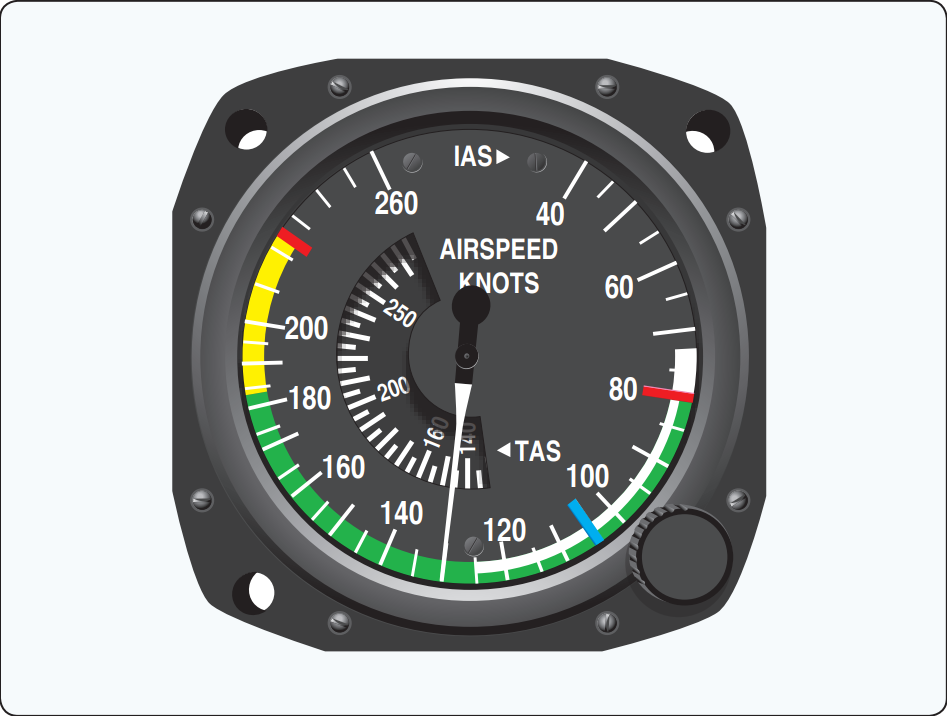
Common Airspeed Indicator Errors
Airspeed indicator mistakes can come from many sources, all of which affect flight safety and efficiency. Installation mistakes happen when the instruments are not aligned or calibrated correctly, and you get incorrect readings and assumptions about the aircraft’s performance.
Instrument mistakes can also be from manufacturing defects or wear and tear over time and airspeed measurements are not accurate. These highlight the need for regular maintenance and checks to make sure airspeed indicators are reliable.
Environmental conditions can also affect airspeed readings, especially when the pitot-static system is compromised. Ice in the pitot tubes is a common culprit that can give you false readings.
So many aircraft have pitot heaters to prevent ice from forming so airspeed indications are accurate.
Knowing and addressing these can make you more confident and informed and safer each flight.
Impact of Weather Conditions on Airspeed Readings
Weather conditions can affect airspeed readings so it’s important to understand and account for them.
One of the biggest factors that affect airspeed readings is air density which changes with altitude, temperature and humidity.
Airspeed indicators are calibrated to sea level density on a standard day but real world conditions rarely are.
As you go up in altitude air density decreases which affects the airspeed indicator. Temperature and humidity changes also affect air density which can cause airspeed discrepancies.
Pilots need to be aware of these and adjust their thinking accordingly to get an accurate speed.
Also, weather phenomena like turbulence and wind shear can affect airspeed. Turbulence can cause rapid airspeed fluctuations and wind shear can cause sudden changes in speed and direction.
Knowing these weather-related effects is key to control and safe flight. By being aware of how weather affects airspeed pilots can make better decisions and fly safer and more efficient.

Importance of Accurate Airspeed Readings
Accurate airspeed is not just for maneuvering but for overall safety of flight. With precise data the airspeed indicator allows you to make informed decisions when adjusting the flight path.
This is especially important in bad weather or unknown airspace. With airspeed you can fly through clear air and turbulent air with confidence and control of the aircraft.
And the airspeed indicator is key to preventing stall related accidents which can be fatal if not addressed quickly.
Knowing the stall speed allows you to recognize when you are getting close to the point where the aircraft can no longer fly.
This awareness allows you to take timely corrective action, increase speed or change altitude, which is critical for stable flight.
By having an accurate airspeed indicator, you not only protect the flight but also the passengers and their comfort, which is why it’s so important in aviation.
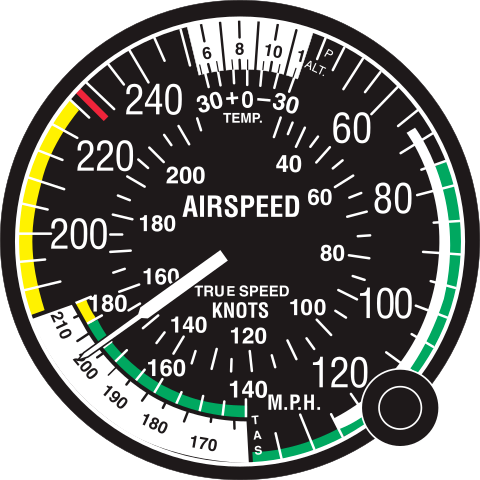
Airspeed Indicator Maintenance and Serviceability
Airspeed indicator maintenance is critical to safe flying and starts with a thorough preflight inspection. This includes checking the static port and pitot tube for blockages. These are the two critical components that make the ASI work.
By checking diligently pilots can ensure these are clear of any debris or obstructions that could affect the readings or give false information in flight.
By taking the time to do this regular check pilots are setting a standard of safety and reliability and feeling good about the aircraft.
And checking the ASI is critical at every phase of flight, starting at takeoff. Pilots should call out the ASI when they see the right readings during climb.
For new pilots especially, flying without a working ASI is a huge risk as they may not have the experience to judge speed and aircraft behavior by feel or sight.
So, understanding and maintaining the serviceability of the ASI allows pilots of all levels to fly with confidence and precision and not just themselves but everyone on board.
Conclusion
The airspeed indicator is a vital tool for pilots and part of the aircraft. Its main job is to help pilots monitor the speed of the aircraft, which is key to safe and efficient flying.
This instrument measures a pressure differential. It does so by reading from two points: the static port which gives static pressure and the pitot tube which measures dynamic pressure.
The combination of these pressures gives the airspeed indicator its speed reading.
Despite its accuracy the airspeed indicator can have minor errors. These errors can be due to installation issues, faults in the instrument itself or changes in temperature and air density. These are usually small but worth noting.
In maintaining and checking airspeed indicators pilots ensure the tools they use are as accurate as possible.
By knowing and addressing the errors pilots will feel more confident and safer in flight and that’s why this is an essential aircraft
